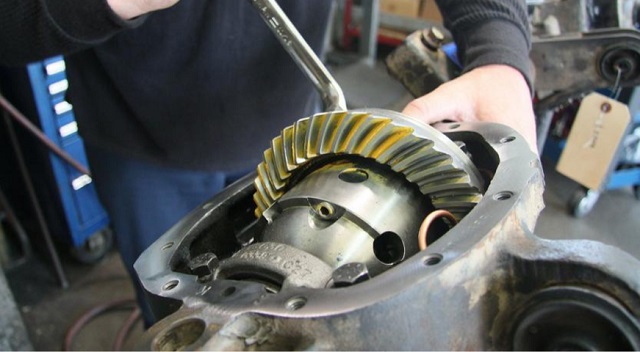
Why 2WD has one differential, the 4WD three
| THE INDEPENDENT | A differential, or gearbox, basically transfers the power from the transmission to the rear wheels and lets the wheels turn at different speeds when cornering. It is one of the most important parts of a vehicle’s powertrain. And because of that, it’s also one of the most expensive and troublesome parts to replace on a car (after the engine and the tranny). For that reason, keeping your differential in top shape is essential.
Many individual gears work as one in the differential and they work to maintain the right tire speed when the car is driving directly down a straight roadway, but they also help adjust the speed of the wheels as the car goes around curves. For instance, when a car is going around a sharp curve in the road, the inside wheels need to go a little slower than the outside wheels. The differential, and the gears and fluid surrounding them is what ensures the wheels will turn at the speeds they need to turn to offer the car maximum stability during a drive.
The gears inside the differential are surrounded by fluids that help keep them protected while the vehicle is in operation. As a car is driven, the differential fluid heats up and over time, breaks down to a point where a car will have metal to metal contact that stops the gears from being able to turn the wheels.
The difference in differentials
Owners of rear-wheel-drive cars will find that their differential fluid is located at the rear of the car. Front-wheel-drive cars will have the differential in the front of the car. The difference with a FWD vehicle is that the differential lives inside the transmission and takes transmission fluid rather than separate differential fluid. It works the same, however. When the transmission fluid of a FWD is changed, the differential fluid is automatically changed.
Unlike 2WD vehicles, a 4WD has three separate differentials; one in the front, another in the center and one in the back. The one in the center is commonly known as the transfer case and fine-tunes precisely how fast or slow the speed is on the rear wheels and front wheels.
How differential fluid is changed
Differential fluid can be changed in various ways depending on the vehicle as well as the tools the repair shop has on hand to drain and refill the fluid. Some of the more modern shops will possibly own an extractor that will not only remove the old fluid but will also refill with new fluid. Older shops and those who don’t own an extractor machine will often pull the drain plug and let the fluid drain out slowly and then will manually refill the fluid using a pump or an oil syringe.
The mechanic will watch for metal shavings in the old fluid and will be able to either refill immediately with new fluid if no shavings are seen or remove the cover and get everything nice and clean before refilling with new fluid. Metal shavings can cause the gears to mess up even when new fluid is put in, so taking some time to remove the cover and thoroughly clean the inside of the differential is always a must.
****
Source: Internet
 The Independent Uganda: You get the Truth we Pay the Price
The Independent Uganda: You get the Truth we Pay the Price


